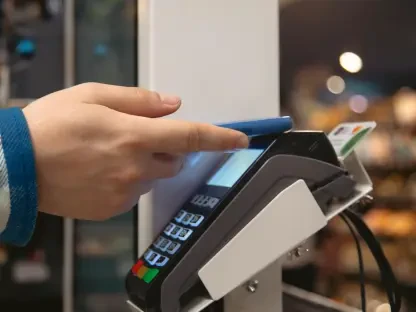Not long ago, shopping involved long lines, cluttered aisles, and the disappointment of a product being out of stock once finally reached. But in a world that’s rapidly embracing virtual and augmented technologies, a revolution is underway. Consider this: Virtual Reality (VR) and Augmented Reality (AR) are paving the way for unprecedented enhancements in retail, set to transform mundane shopping into an engaging digital experience. The emerging question is whether traditional strategies suffice in this new digital age of hyper-personalization and efficiency.
The Urgency of Adaptation
In today’s tech-driven world, consumers have evolved rapidly, along with their expectations. This shift necessitates that retailers reimagine their methods to stand out. As competition intensifies, retailers face the crucial task of not just surpassing their peers but also meeting the escalating demand for convenience and immersive experiences. The triumph of any retail strategy now hinges on its ability to deliver prompt, seamless, and personalized shopping journeys—a feat that VR and AR technologies can adeptly achieve.
The Transformative Power of VR and AR
VR’s Predictive Precision in Retail
Virtual Reality has become a game-changer in refining how stores are set up before even the first physical product hits the shelf. VR-based planogram testing enables retailers to assess fixtures and layouts in a virtual setup, minimizing the need for costly and inefficient physical trials. An impressive example includes a consumer packaged goods brand achieving a notable 7% sales uplift by deploying VR for innovative merchandising strategies, eschewing the constraints of physical A/B testing.
AR’s Dynamic Role in Compliance
Augmented Reality takes execution and compliance a step further by overlaying visual guides on real-world retail environments. This cutting-edge capability ensures that staff sees exactly how shelves are to be stocked with zero ambiguity. In fast-paced sectors, eliminating these execution gaps is crucial for maintaining market share. AR empowers teams with confidence and accuracy, leading to better compliance and performance metrics.
Enriching Shopping Experiences with AR
Retailers are increasingly tapping into AR’s potential to offer an enhanced in-store experience. Imagine effortlessly navigating a store through an app that directs you to every desired item, as tested by Lowe’s. This technology not only streamlines the shopping journey but also allows customers to preview products in their homes, as facilitated by IKEA’s groundbreaking tools. Through such innovations, AR reduces frustrations and ensures a smooth path from stockroom to purchase.
AR: The Future of Interactive Marketing
Moving beyond merely assisting in purchases, AR acts as a powerful marketing engine. Retailers use AR-driven experiences to increase customer interaction, leading to higher sales conversion rates. For instance, Sephora’s AR-powered mirrors resulted in a significant uptick in sales, boasting a 31% increase. Such strategies are particularly effective in sectors requiring high assurance, like cosmetics, where try-before-you-buy can stand between a sale made or lost.
Validating the Impact with Expert Opinions
Industry experts emphasize the undeniable role of VR and AR in revolutionizing retail landscapes. A future where these technologies are integral to business strategies seems inevitable. Retailers adopting these tools report heightened customer satisfaction and operational efficiencies. This isn’t merely a trend but a substantive shift, with research showcasing the tangible lift in consumer engagement metrics and sales figures. Senior leaders in the sector endorse these insights, affirming that VR and AR are indeed the future of retail.
Strategic Steps for Successful Integration
For retailers considering this technological leap, the integration of VR and AR requires a calculated approach. The transition from traditional methodologies involves assessing technological readiness and potential return on investment. Beginning with small-scale pilots can offer valuable insights and pave the way for wider deployments. Institutional agility and openness to innovation are key to navigating this digital transition, ensuring sustained relevance and competitiveness in an evolving market landscape.
In conclusion, the landscape of retail has been significantly reshaped by VR and AR technologies. Their impact on retail strategies, operations, and customer engagement marked a notable shift toward digital transformation. Those who embraced these advancements saw increased efficiency and consumer satisfaction. Exploring strategies involving VR and AR today represents a step toward thriving amid retail’s digital revolution.









